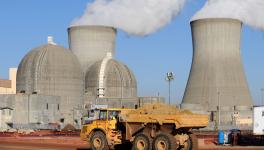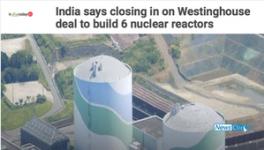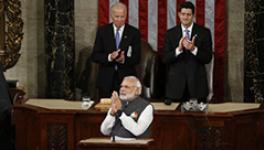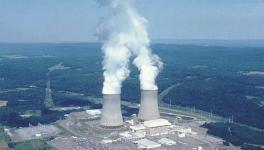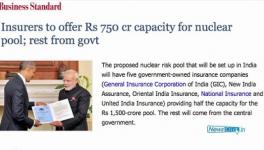With Westinghouse Bankruptcy, the Nuclear Energy Story Nearly Over
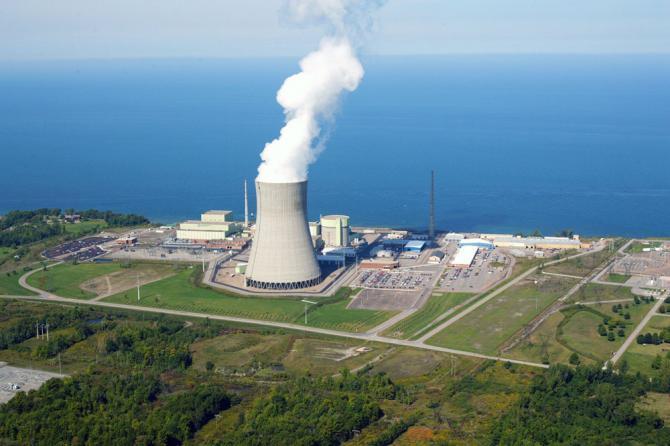
With Westinghouse announcing its bankruptcy, India's pledge to buy at least 10,000 MW as a part of the India US Nuclear Deal and reiterated by Modi last year, should be given a decent burial. Any agreement with Westinghouse now means that India would be bailing out Westinghouse and the US nuclear industry with Indian peoples' money.
This also draws to a close all talk about a nuclear renaissance. The three major reactor manufacturers – Toshiba-Westinghouse, GE-Hitachi and Areva, France – are all in major financial difficulties. Only a fool will still believe their promise that the 3rd generation reactors they are developing – none of which have been successfully commissioned as yet – are either safe or cheap.
The Left's position during the India US 123 Deal was that it neither served India's strategic interest, nor made sense in energy terms. It also meant abandoning India's self-reliant nuclear reactor industry for importing costly and unproven US reactors. Though it failed to stop the 123 Agreement in Parliament, the Left successfully led the struggle to modify India's Nuclear Liability Act, ensuring that nuclear suppliers, like in any other hazardous industry, should be liable for their faulty equipment.
The Fukushima disaster has shown that a nuclear accident can cost up to $200 billion. Even this could be a conservative estimate. The Indian liability law caps operator and suppliers' liability to just $ 407 million (300 million SDR's). Though cost of a reactor is in billions of dollars, even this small liability, only a fraction of its cost, was perceived to be too “dangerous” and unacceptable to the US suppliers.
Last year, Modi, announced during one of his US visits that not only would India buy US reactors, a continuation of the assurance given by Shivshankar Menon, the Foreign Secretary under Manmohan Singh (Letter September 10th, 2008), but would also assume the liabilities of the US suppliers in case of of a nuclear accident. India offered Mithi Virdi in Gujarat to Westinghouse and Kovvada in Andhra to GE as the two sites. Subsequently on GE's failure to show any successful contract combined with local resistance in Mithi Virdi, GE's project was considered cancelled, and its Andhra site offered to Westinghouse.
Fortunately for India, Modi's assurances have come too late for the US nuclear industry. The much touted nuclear renaissance is now over. In OECD countries, only 7 new reactors are being built with varying degrees of state support. With huge cost and time overruns, the curse of the nuclear industry, all of them are in deep trouble. GE, unsuccessful in selling even one of its so-called advanced design, has virtually pulled out of the nuclear business. After huge and continuing losses, Areva, the French reactor supplier, is being taken over by EdF, the French state-owned energy utility. EdF has already scrapped the new Areva EPR design, with which the Finnish Olkiluoto and French Flamanville plants were being built. This is also the design Areva is trying to sell for the Jaitapur project in Maharashtra.
The major objections of the Left regarding imported reactors have been proven correct. The untried and untested designs have meant numerous changes and difficulties in construction, leading to significant delays and sharp increase in costs. The cost of the two Areva plants of Euro 3 billion each originally, have increased by almost three times.
The Westinghouse story is no different. Under the Bush administration, the US government declared certain subsidies for new nuclear plants. This was continued by Obama, It was to kick-start the US nuclear industry's revival, and help GE and Westinghouse sell their “advanced” reactors. The GE had developed its ESBWR and Westinghouse its AP1000 that they claimed were 3rd generation designs. Utilising the government subsidies, two sets of plants were ordered from Westinghouse, two units in South Carolina, and two units in Georgia, at an estimated cost of $14 billion and $10 billion respectively.
Westinghouse faced enormous problems right from the beginning. A huge number of modifications had to be done, a number of vital pieces of equipment were found to be faulty, all of which led to serious cost and time over runs. This picture is no different from the other two sets of orders that Westinghouse was executing in China. It had secured two orders of two units each for AP1000 reactors for Sanmen and Haiyang plants. While the impact of the rework for the four AP1000 units in China are not known, the time overruns are clear. Instead of 2013 and 2014, these units are now scheduled for commissioning in 2018.
The two US utilities ordering the Westinghouse reactors had observed one caution. Given the nuclear industry's history of inability to control its prices, they had signed fixed price contracts with Westinghouse. With a fixed price contract, Westinghouse could not pass on the cost of faulty equipment and its rectification to the utilities. Toshiba, which had bought a majority share in Westinghouse, was forced to take huge losses, leading finally to its withdrawal and Westinghouse filing for bankruptcy.
Westinghouse's bankruptcy means that the utilities have now to see how these projects can be completed. They have already sunk too much money to scrap the plants. If they want to commission the plants, they will have to start absorbing the increase in costs. The utilities are already paying huge amounts for capital that has been locked up during construction and the interest charges for the loans they have taken. With the projects taking almost twice the time that Westinghouse had promised, these add up significantly in what finally the consumers have to pay for the cost of electricity.
In the exchanges between the UPA and the Left during Manmohan Singh's government, the cost of new nuclear plants from French or US suppliers had come up. The UPA had presented figures for capital cost per KW of $1,500 and the price of power to be Rs. 1.49 paise per unit from imported nuclear plants. The Left had given figures from Olkiluoto and the US, showing that the capital cost would be at least $4,000 per KW and the price of electricity from such plants around Rs. 5 per unit.
The figures from the US and French projects now show that the capital cost per KW for such plants is in the range of $6,000-7,000, and therefore the price per unit of electricity from such plants will not be less than Rs. 8-10 per unit.
Why did the UPA claim such absurdly low figures for nuclear energy? They were either figments of their imagination or took these figures straight from the promotional material of the nuclear suppliers. To claim nuclear energy to be competitive, the nuclear suppliers took a 60-year life of the plant, left out the interest on capital during construction as a component of the cost, and claimed their new designs had much lower capital costs. They then did what are called levellised cost calculations – the cost of electricity over the lifetime of the plant. By this sleight of hand, they reached figures for the cost of nuclear power to be competitive with coal and gas.
Of course, the actual capital costs are much higher than what the nuclear industry was claiming. The regulators and utilities that price the electricity, have also to look at all the cost components including cost of capital, interest on loans, etc., and fix the price that of electricity. What matters to consumers and utilities (distribution companies or state electricity boards) is not the levellised cost of electricity, but the entry cost of nuclear power to the grid. This is what needs to be competitive to other sources. Any such calculations shows that nuclear energy is simply not competitive.
The collapse of Westinghouse, which has either built or licensed its designs to almost half the world's reactors, shows that the nuclear story is nearly over. The reality is that with the cost of renewables – solar photovoltaics and wind – dropping sharply, the economics are increasingly against nuclear energy. This is apart from danger of catastrophic accidents or danger from long-term storage of radioactive nuclear wastes. It may still sustain itself for some time in countries, where there is a strong indigenous nuclear industry, such as India, China, Korea and Russia. But its days are now clearly numbered.
Disclaimer: The views expressed here are the author's personal views, and do not necessarilyrepresent the views of Newsclick
Get the latest reports & analysis with people's perspective on Protests, movements & deep analytical videos, discussions of the current affairs in your Telegram app. Subscribe to NewsClick's Telegram channel & get Real-Time updates on stories, as they get published on our website.









